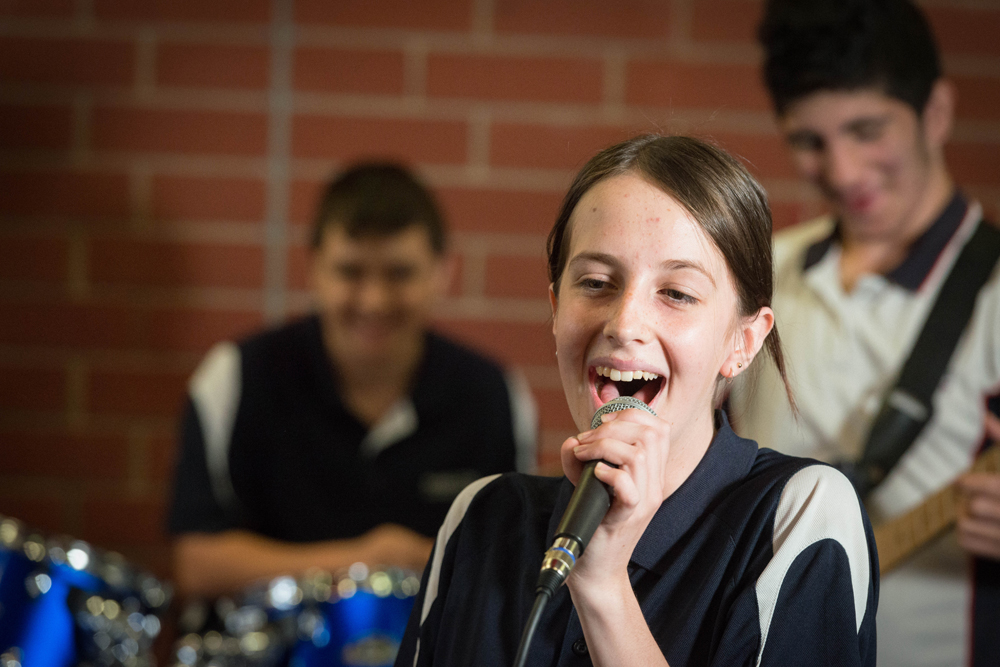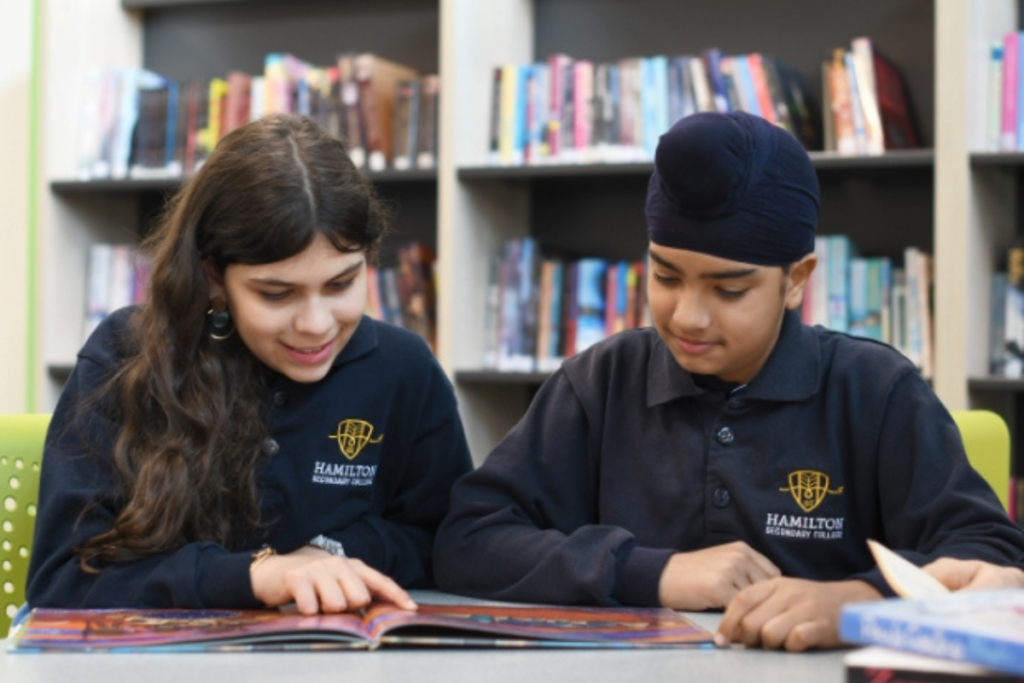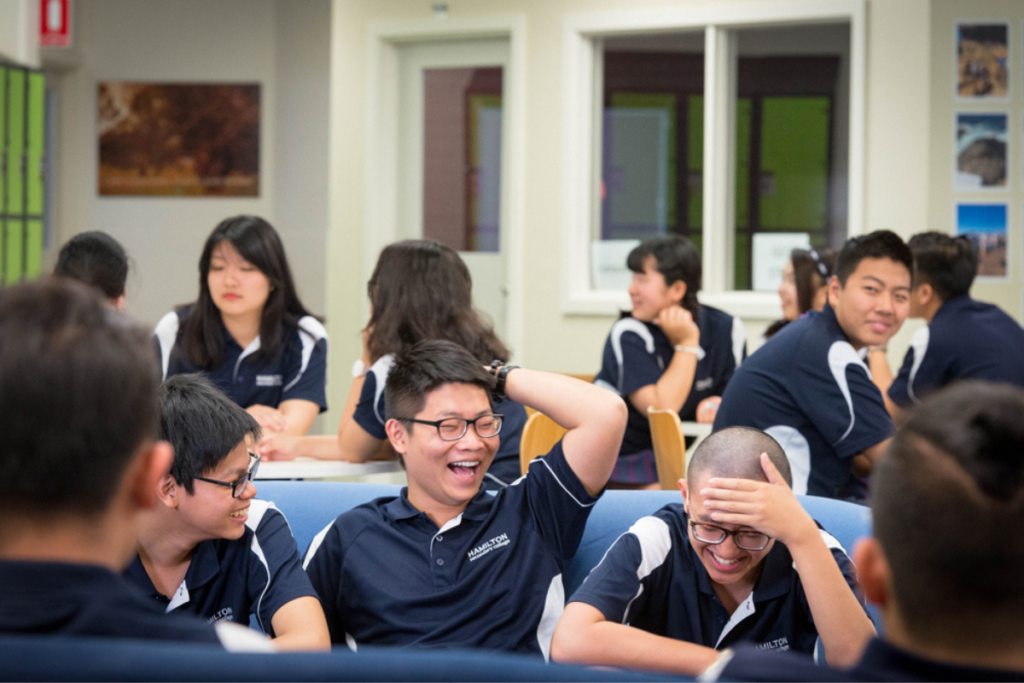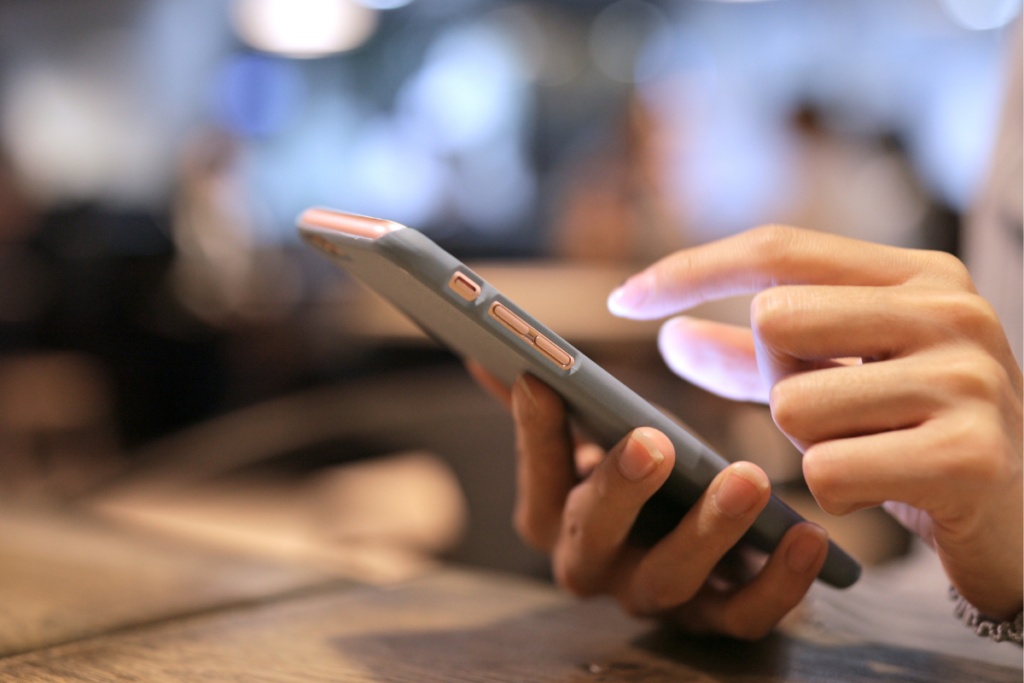It’s been a year since South Australia introduced its mobile phone ban across schools. Find out how ditching devices has changed the culture at this school.
South Australia’s mobile phone ban in public schools has been in place for over a year, and the results are in: Fewer distractions, less bullying, and a whole lot more real-world interaction.
But what does that actually look like inside a school? We spoke to Hamilton Secondary College Principal, Peta Kourbelis, to find out how the ban has transformed her school’s culture – and why she would never go back.

Why ban phones in the first place?
Since Term 3, 2023, South Australia’s mobile phone ban in schools has aimed to reduce distractions and cyberbullying – and it’s working.
Under the policy, students must keep their phones off and out of sight for the entire school day – including breaks.
While some were sceptical at first, a one-year review of the policy – based on over 3,000 submissions from parents, staff, and students – shows it’s making a real difference:
- 93 per cent of school leaders and 79 per cent of teachers say they spend less time dealing with phone-related issues.
- 76 per cent of school leaders and 70 per cent of teachers report that students are more focused in class.
- 75 per cent of school leaders and 64 per cent of teachers say serious social media incidents have dropped.
- 57 per cent decrease in reported cyberbullying incidents across SA public schools.

Less cyberbullying, more confidence
But the impact goes beyond statistics. At Hamilton Secondary College, the change has been cultural.
Without the constant distraction of their phones, students at Hamilton are not only more focused in class but also more at ease participating, Peta says.
With cyberbullying out of the picture, classrooms feel safer, and students are more engaged in their learning.
Peta has seen the shift firsthan: “Students can actually get on with their work without that underlying anxiety that someone might be recording them or disrupting them with text messages.”
Senior students who’ve experienced both before and after the ban say the difference is really positive for their learning. Classroom discussions flow better, and they’re able to concentrate more without the pull of a mid-lesson Snapchat check.
Teachers have noticed the change, too. “We’re not having to constantly police phone use anymore, which means more time actually teaching,” Peta says. “Students are more engaged, and discussions are more meaningful.”

From silent scrolls to actual conversations
Before the ban, lunchtimes at Hamilton were quiet – but not in a good way. Students sat in groups, faces buried in screens, only pausing to share a meme or TikTok.
Now, the schoolyard hums with conversation and movement.
“One of the first things we noticed after the ban was how much more laughter [and] more activity there was in the yard. It’s been a big shift – students are playing sport, chatting, and actually engaging with each other.”
With phones out of the picture, students have rediscovered old-school ways of socialising – shooting hoops, kicking a footy, or just hanging out.
“The first few weeks were an adjustment, but now it’s second nature. They come to school, put their phones away, and get on with their day.”

A boost for clubs, sports and student life
With less screen time, extracurricular activities at Hamilton have taken off.
“Sport has become very, very popular – especially basketball and volleyball – to the point where we’re looking at rebuilding some of our courts,” Peta says.
And it’s not just sport. More students are joining clubs they might never have considered before – chess, robotics, astronomy and dance.
One standout is the Wellbeing Club, where students help organise school events like Harmony Day, Reconciliation Week, and the Colour Run to bring people together.
“It’s all about making students feel supported and part of a community,” Peta says.
Some students who once spent break times scrolling social media have now found new passions – and the friends to share them with.
“The school is more vibrant now, with students showing increased interest in how their school is run,” Peta says. “This greater sense of belonging has had a really positive impact on wellbeing.”

What about parents?
Two-thirds of parents across SA now see the ban as a positive change, especially those already worried about social media use.
At Hamilton, “parents are very supportive of the ban,” Peta says. “They’ve noticed real changes in their children’s social skills and wellbeing since phones were removed from the school day.”
“Students are building stronger social skills,” she says. “They’re learning how to navigate friendships, resolve conflicts, and be part of a group in a more natural way. That’s had a really positive effect on their confidence and wellbeing.”
Peta says some parents were initially worried about reaching their child in an emergency, but schools – including Hamilton – have simple, effective communications solutions that she says work for everyone:
- Students can go to the office and call home if needed.
- Parents can call the school to get a message to their child.
- Schools maintain emergency protocols, just like they did before smartphones were a thing.
And keeping students safe from cyberbullying has gone beyond just removing phones this year.
In 2025, schools are building on the phone ban with updated online safety lessons – helping students navigate digital risks, manage device use responsibly, and know when to seek help.
For parents, it’s another step towards making sure their kids are safer both in and out of school.

TL;DR? It’s a culture shift, not just a rule
The phone ban isn’t just about fewer distractions – it’s about better school culture. More laughs. More movement. More connection.
The energy and activity that now fill Hamilton’s schoolyard represent a return to the kind of genuine social interaction that helps students thrive.
And, as Peta says, “I honestly don’t think we’d ever want to go back.”
For more on South Australia’s mobile phone ban in public schools and tips on mobile phone safety, click here.
















